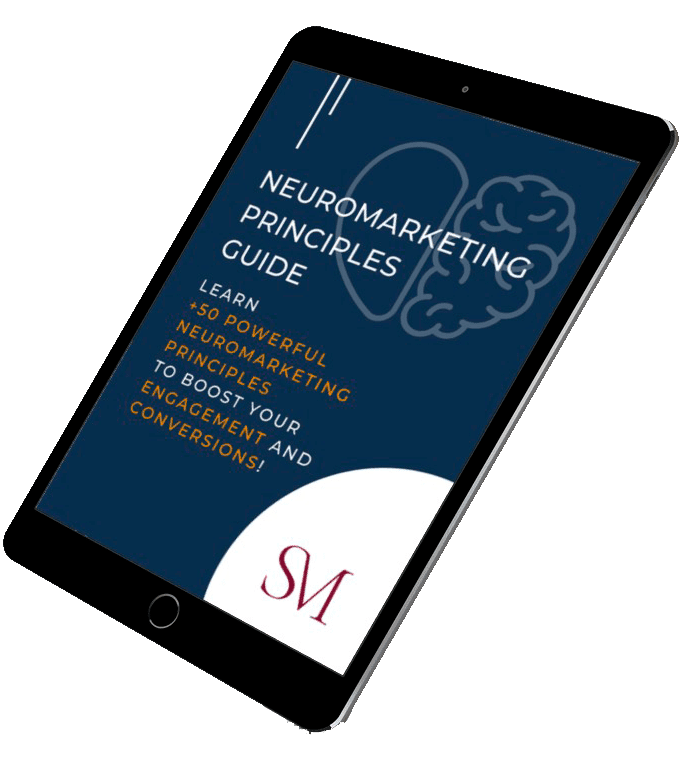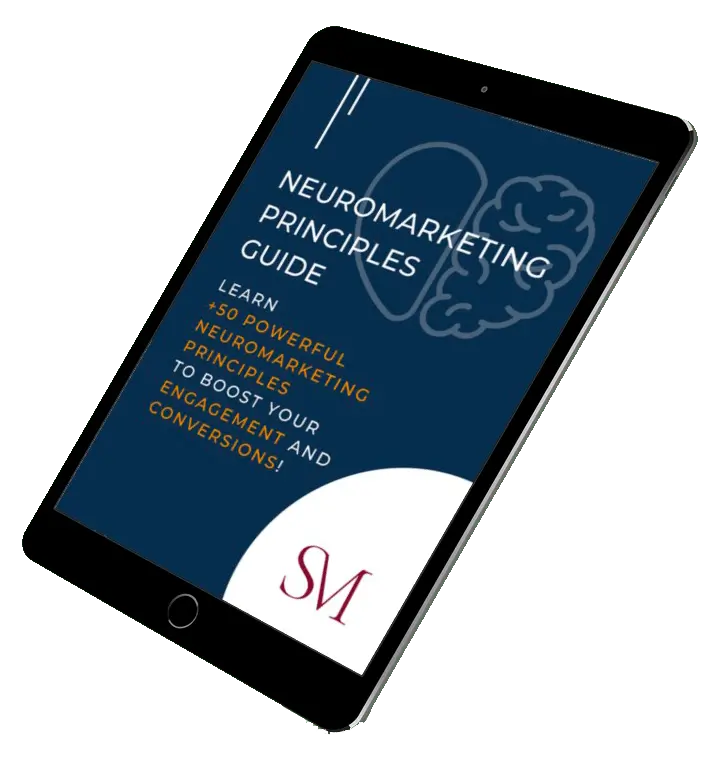Content Marketing Facts
When you think about ways to improve and optimise your content marketing strategy, you probably don’t think about the field of neuroscience.
Why should you? – You may think.
Although this discipline offers many insights into how to communicate a product or service. So many are the insights provided that neuroscience has now been playing a strong role, becoming a field of its own.
Within marketing, this field takes the name of neuromarketing, and it involves taking advantage of the abundance of information gathered from measuring the human brain’s electrical fluctuations to drive positive engagement through specific marketing messages and techniques.
Now you may think that you need to hire a neurologist to analyse the effectiveness of their content marketing strategies and take advantage of neuromarketing.
And of course, you are probably thinking that you are not going to do that.
Well, here is the good news, you don’t need to.
There are all sorts of feedback, information, and advice that can be taken from existing neuromarketing research to help you design and run more focused and results-driven content marketing plans.
In this article, I am going to show you five of the most important ways that neuromarketing can be used to improve and refine your content marketing strategy.
Content Marketing for Dummies – Use emotions to wake up the brain
The human brain is designed to kick into high gear when it gets stimulated by powerful and intense emotions.
If the visceral emotion is linked to a positive experience, the brain wakes us up so that we can enjoy the pleasure-inducing features of that experience.
If instead, the visceral emotion is linked to a negative experience, the brain still wakes us up, but in this case, to actively plot out how to protect and insulate ourselves from that negative experience.
Therefore, content marketing that has the ability to trigger strong emotions – whether positive or negative – plays a crucial role in activating your target audience’s brain, which, in turn, makes them more likely to grasp and retain the information shared in the content.
Emotions are very powerful. In fact, the most successful companies sell mainly experiences and emotions rather than simply products or services.
Let’s think about this; what is the first thing that comes to your mind if you hear “Just Do It”?
Nike has built their entire branding around the experience of a positive outcome, and as a result, people globally just recognise them through their motto.
If you want to learn more about this, click here to know how Nike and other established companies have been running their branding strategies.
The key point here is understanding what are the main driving emotions that will drive your target audience to interact with your business.
Exactly because emotions are very powerful, it’s important to make the right emotional impact.
If the stimulated emotion is the wrong one, the result will be seeing your target audience bouncing back and lowering your engagement.
This process must begin from deep audience analysis if you want it to be efficient and make the right emotional impact on your ideal clients.
If you want to learn more about this, click here to see how to do a deep audience analysis and uncover your audience hidden driving emotions and behavioural patterns.
Content Marketing for B2B – Appeal to the brain’s self-serving instincts
The human brain has evolved to be self-serving, basically to react in ways that keep us alive. This survival instinct also helps us to feel good about ourselves.
Therefore, content marketing pieces that blow the readers’ ego and make them feel identified and at peace with their own emotional, physical, and mental condition, are more likely to be memorised and perceived as valuable.
Make your content amazing by appealing to these brain instincts and watch your audience fall in love with your business.
Content Marketing for Ecommerce – Feed the brain’s desire for familiarity
The reason why branding is so powerful in the marketing world is because of the human brain’s desire to assume consistency and comfort from interactions with the surrounding world.
Indeed, when we recognise familiar patterns, our brains respond by providing the pleasure-inducing neurochemical dopamine.
In the world of content marketing, these familiar patterns can be stimulated with the use of fonts, images, graphics, and colour choices in your content creation.
If you want to know more about this, click here to see how Amazon uses Neuromarketing to be the best online retailer.
Learn +50 Powerful Neuromarketing Principles to Boost Your Engagement and Your Conversions

Help the brain to avoid complexity
Humans are designed to think through 2 different systems: emotional and rational.
The emotional one is emotions driven and uses mainly familiar patterns to make decisions.
The rational system, instead, is the one that asks more questions and is more sceptical, and doesn’t use shortcuts to make decisions.
The goal of Neuromarketing is to create content able to stimulate the emotional system.
Therefore, you should be doing everything you can to make your content pieces as simple and straightforward as possible for the reader.
If the content is not easy and engaging, it’s when the reader starts asking questions and begin reasoning with the rational system.
Anything that our brains perceive as difficult to process automatically becomes a more complicated and time-consuming task, which means we must be cognizant of all potential access barriers, including a poor font choice, or a complex graphic, or a too-big block of text.
Make your content easy. The less, the more.
The easier and more straightforward your content is, the most likely it will stimulate your audience’s emotional system.
Surprise the brain with unexpected word choices
When consuming any piece of content, the human brain is programmed to process information quickly by basically predicting and pre-processing the words and sentence constructions we expect to find.
By doing this, we are all able to skim and scan through the content while still absorbing its central messages and topics.
Therefore, speaking about content marketing, you will want to surprise the brain with something unusual and more difficult to anticipate with the benefit of increasing the retention of the information you want to share with your audience.
Here comes the utility to use unexpected word choices and sentence constructions in order to stimulate and wake up your potential customers’ brains.
For example, if you read the sentence, “Money doesn’t grow on _____,” your brain is likely to automatically pre-fill in the final word with “trees”.
However, if, instead, you encounter the words “designer trousers”—as in, “Money doesn’t grow on designer trousers”—your brain is more likely to suddenly wake up and your interest is piqued.
The same happens to your potential customers. Pique their attention with something out of the ordinary and they will be more receptive to the message you share with them and most likely to interact with your business.
How much should you invest in Digital Marketing?
Conclusions
There’s no question that the human brain is continuously activated by the constant environmental stimulations. Depending on the stimulation, the instinctive brain response will be different.
The challenge here is to select and direct the right types of stimulation to create more effective marketing content able to make the right emotional impact on your target audience.
For this, neuroscience can be an important asset, providing help about how to use emotions to wake up your potential customers’ brains, how to appeal to their innately self-serving interests, how to feed their desire for familiarity and simplicity, and how to surprise their brains with word games and other unexpected language choices.



